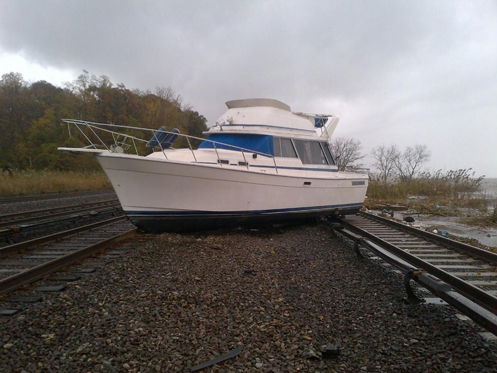When people are hurt and homes and precious possessions are destroyed or lost forever, a wrecked recreational sailboat seems wholly unimportant. But for many people, the boat is their home or is connected to their livelihood.
In the coming days and weeks, more people will be returning to their vessels in the wake of Hurricane Ian and doing what they can to keep them safe. I’ve been through two Category 5 hurricanes (one ashore, one afloat) and several smaller ones. In every case, boats that could have been salvaged shortly after the storm were lost due to neglect, but this is expected, given the many other, more critical needs in a storm-ravaged community.
Boat owners should be aware of steps they can take to prevent further loss to their boats. And more importantly, they should be aware of the precautions they can take to keep themselves safe during the period when most storm-related injuries and deaths occur. Already we’re seeing improper use of generators contributing to fatalities after Hurricane Ian.
Here, according to the Boat Owners Association of the United States, are some of the steps you can take to prevent further damage.
- If your boat has washed ashore, remove as much equipment as possible to a safe place to protect it from looters or vandals. Its a good idea to put your contact information somewhere conspicuously on the boat-along with a No Trespassing sign. However, never climb in or on boats that have piled up together or are dangling precariously from dock pilings or other obstructions.
- Protect the boat from further water damage resulting from exposure to the weather. This could include covering it with a tarp or boarding-up broken windows or hatches. As soon as possible, start drying the boat out, either by taking advantage of sunny weather or using electric air handlers. All wet materials such as cushions must be removed and saved for a potential insurance claim. The storm may be gone, but the clock could be ticking on mold growth.
- Any engines and other machinery that has been submerged or has gotten wet should be “pickled” by flushing with fresh water and then filling with diesel fuel or kerosene. To learn how to pickle a boat motor, go to: http://www.BoatUS.com/hurricanes/pickle.asp.
- If your boat is sunk or must be moved by a salvage company, it is not recommended that you sign any salvage or wreck removal contract without first getting approval from your insurance company.
To that advice, I’d add the following: BE CAREFUL!

Photo courtesy of Boat U.S.
Any attempts to salvage your boat or gear carry many hidden risks. In fact, according to the Center for Disease Control, more storm-related deaths and injuries occur in the days and weeks after the storm than during the storm itself. Some things to watch for:
- Do not attempt to use any AC-powered electrical equipment or power hookups that have been submerged until they have been tested and verified as safe.
- Avoid entering the water in areas where a threat of electrocution still remains. This is more relevant to freshwater areas, where the risk of electric shock is greater. (Because salt water is more conductive than the human body, no fatalities due to electric shock have occurred in salt water.)
- Be particularly careful with unfamiliar powered cutting tools, portable generators, or power equipment in general. Here are some important tips from OSHA the (Occupational Safety and Health Administration) on the use of generators.
- In yards or on land, be especially cautious working around boats that are not properly stabilized by jackstands or something similar. The same goes for rigging, masts, or other heavy items that were destabilized during the storm. Don’t go aloft on a compromised rig.
- If you will be making an insurance claim or seeking assistance from federal agencies (available to those who work or live on their boat), take pictures of boat damage or damaged equipment, and keep a log of any efforts you take to prevent further damage.
Any others? Please share them in the comments section below.






































In 1991, a couple days after Hurricane Bob hit Cape Cod, a “helicopter crane” arrived in Falmouth, Mass., and was lifting good-sized boats from where Bob had landed them back into salt water, using two slings of heavy-gauge webbing. A crowd gathered to watch and as one boat was carried over their heads, the forward sling slipped and the boat looked as if it might drop. Fortunately, the sling snagged on a fitting and catastrophe was avoided. The moral: impressive equipment doesn’t necessarily mean that danger is being avoided.
Lizzie McMullen died when the power tool she was running fell in the salt water and she grabbed it.
The best thing you can do is to take photos of your vessel from a safe distance and submit copies with a claim to your insurance. Then let them deal with contracting the professionals to salvage the vessel safely, if it can be salvaged and restored, in their opinion. To undertake salvage and restoration yourself is foolish … somewhat the same as not having put adequate insurance on your vessel in the first place!!!